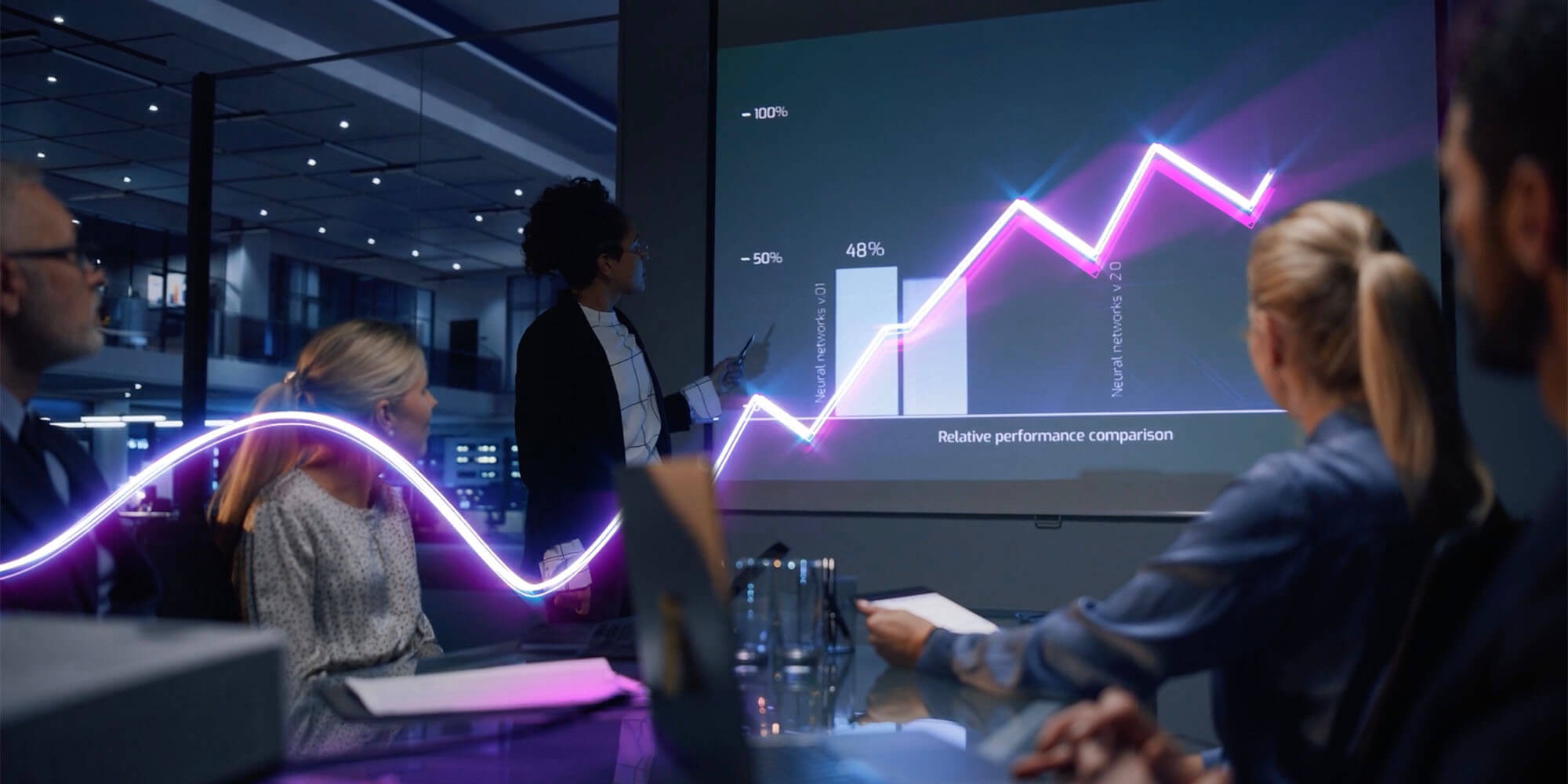Of all the aspects that comprise the burgeoning metaverse, predictions tell us that intuitive technology is poised to continue making the most significant impact. Many of us are already using it in its many forms, from speech recognition to biometric identification. More and more people enjoy in-home, voice-activated digital assistants like Siri, Alexa, and more.
Trends show that increasingly advanced technology presents more opportunities for businesses and consumers to connect through this intuitive technology. Whether voice-activated commands, next-generation accessibility features, or public safety-focused contactless interaction points, the newest technologies are changing how people in all industries engage with brands, products, and services.
Predictive data analytics show us that consumers will continue to adapt and welcome these new and more intuitive tech tools in greater numbers. While younger users already favour these technologies and the seamless integration into their products and services, we expect that more users in older age groups will incorporate these tools as they grow in sophistication and rise in ubiquity.
Intuitive Tech Is Already Here
Many of us are already using intuitive technology, whether touchless or identity verification devices. Smartphones have changed the nature of the game when it comes to the technology once considered futuristic, and they continue to usher in revolutionary changes in our lives. Touchless features allow people to unlock their phones and other devices via facial recognition, bypassing the need for passwords and complicated swipe motions in favour of a more secure method.
Personal assistants such as Siri, Alexa, and similar have grown more common in our homes and through smart devices like our phones. Overall, 36% of users have used these tools in some form or another, with that number taking a significant jump among younger users (52%). We see similar trends in facial recognition software, with younger users using them more regularly. Still, the popularity in all demographics is growing along with the advancements in this form of technology.
The advanced technology on the back end that enables these intuitive forms of communication is built on things like Natural Language Processing, which powers speech and voice recognition. While these two may seem similar and are often paired together, they are two very different yet essential parts of the equation. With speech recognition, devices are better able to understand what we’re saying and have become even more sophisticated at reading the patterns and flaws within human speech—and every “um” or “you know” public speaker can attest to those! On the other hand, voice recognition is another form of biometric identity verification and an essential part of security.
Facial recognition is a powerful form of security that is nonetheless more intuitive than remembering and inputting passwords. This allows users to unlock their devices via facial scan, which is more secure and easier to parse. Gesture recognition follows suit, allowing users to input commands or access certain essential functions through predefined motions. As these systems advance, they become more responsive and better able to read complex gestures, vocal input, and even emotions.
Necessary but Welcome
The pandemic certainly fueled the need for touchless tech, but the trends were already there. More advanced speech and gesture recognition help those with speech and motor impairments fully use their devices. The rising popularity of in-home personal assistant devices has already helped solidify the utility of contactless, responsive technology. That trend continues to be a large part of the burgeoning metaverse. Predictions hold that this technology will be increasingly applied across our lives, including in vehicles, enabling stronger security measures and more powerful interactivity features.
Making Technology More Natural
While the pandemic boosted the rate of design and the overall public embrace of touchless options, the ultimate goal is to create a more natural and seamless blend of technology with our daily lives. The practical reality follows the path laid out by predictive data analytics: all of these interactivity features combine to create a network of systems, devices, and services that responds intuitively to our gestures, our vocal commands, and even our moods. Instead of technology as a separate goal, these things will simply be extensions of our daily lives in the metaverse.
As easily as one might flip on a light switch now, in the metaverse, it will be possible to activate a key work device, flicking through design notes or important drafts with just a mere motion. Rather than tapping away at a keyboard, we’ll issue vocal commands to high-powered digital assistants and instantly connect with the required people, resources, or even the right background.
With augmented reality and virtual reality displays becoming more advanced, cheaper, and more readily accessible, we expect that the future lies in a seamlessly integrated metaverse. Predictions aside, we’re already seeing these trends toward user friendliness and more natural technology operations, and this trend will continue into 2023 and beyond. The difference between using an old rotary phone to dial a phone number you have memorised and simply saying, “Siri, call Mom”, is an excellent example of the things to come. We have that ability now, and the tech is only becoming more prevalent.
What’s Next?
The trends are exciting, and the possibilities seem endless. Assistive technology such as Cortana, Alexa, and Siri is widespread, and the numbers are growing. People who have used touchless technology and made effective use of digital assistants are delighted with the results. Of those who have less interest in these options, the overwhelming majority have never used them. Therefore, as more people are convinced to try these technologies, the satisfaction rate and subsequent use cases will increase exponentially.
Acxiom studies the trends, interprets the data, and embraces the technology that is changing our lives—and being changed to fit into those lives. We’re all about discovering how technology and industry meet human needs ethically and innovatively, and we’re excited to see the future of intuitive, responsive technology.



